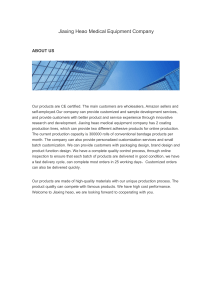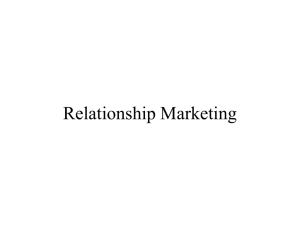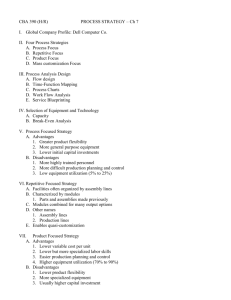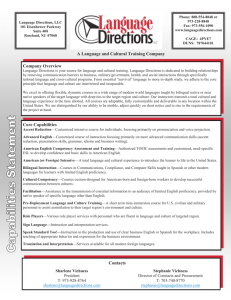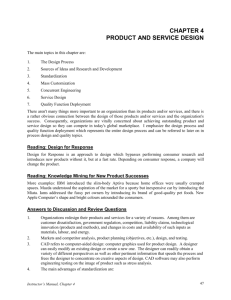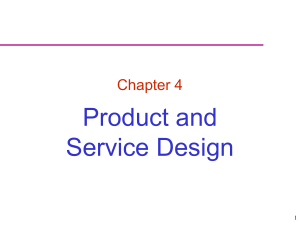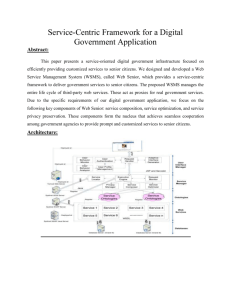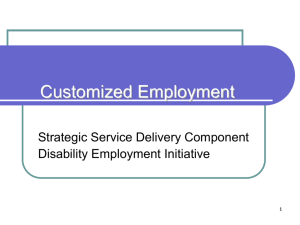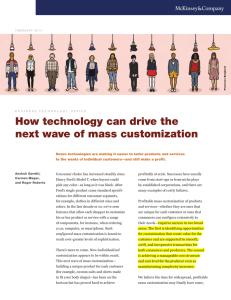Strategy Insight When Is the Strategy of Customization
advertisement
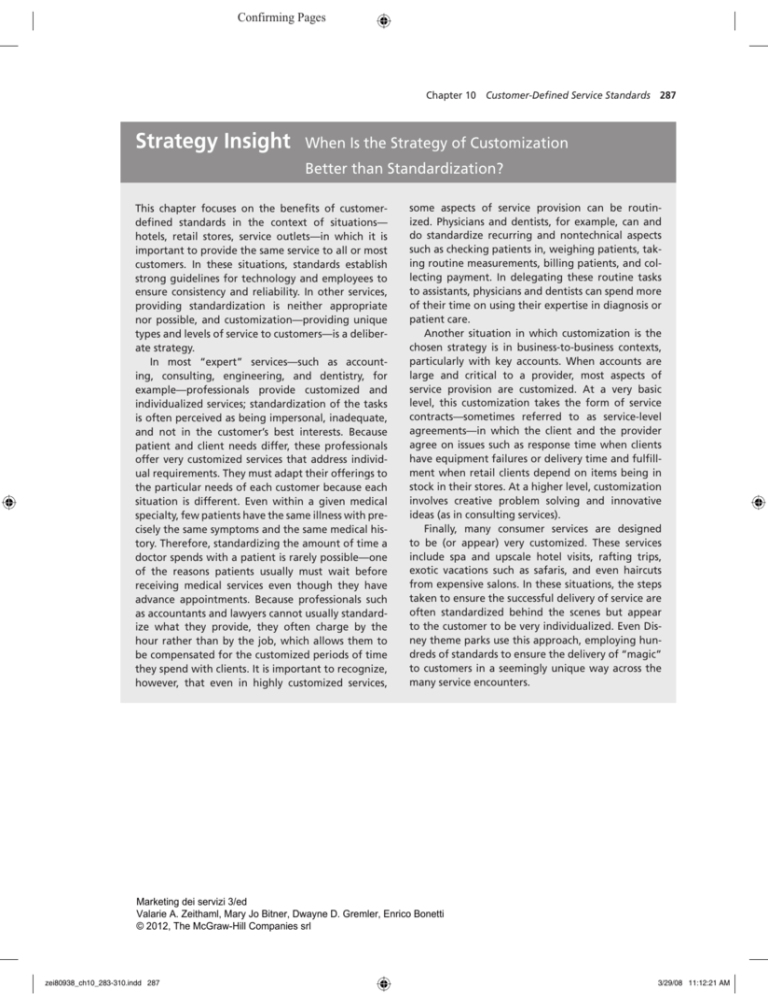
Confirming Pages Chapter 10 Strategy Insight Customer-Defined Service Standards 287 When Is the Strategy of Customization Better than Standardization? This chapter focuses on the benefits of customerdefined standards in the context of situations— hotels, retail stores, service outlets—in which it is important to provide the same service to all or most customers. In these situations, standards establish strong guidelines for technology and employees to ensure consistency and reliability. In other services, providing standardization is neither appropriate nor possible, and customization—providing unique types and levels of service to customers—is a deliberate strategy. In most “expert” services—such as accounting, consulting, engineering, and dentistry, for example—professionals provide customized and individualized services; standardization of the tasks is often perceived as being impersonal, inadequate, and not in the customer’s best interests. Because patient and client needs differ, these professionals offer very customized services that address individual requirements. They must adapt their offerings to the particular needs of each customer because each situation is different. Even within a given medical specialty, few patients have the same illness with precisely the same symptoms and the same medical history. Therefore, standardizing the amount of time a doctor spends with a patient is rarely possible—one of the reasons patients usually must wait before receiving medical services even though they have advance appointments. Because professionals such as accountants and lawyers cannot usually standardize what they provide, they often charge by the hour rather than by the job, which allows them to be compensated for the customized periods of time they spend with clients. It is important to recognize, however, that even in highly customized services, some aspects of service provision can be routinized. Physicians and dentists, for example, can and do standardize recurring and nontechnical aspects such as checking patients in, weighing patients, taking routine measurements, billing patients, and collecting payment. In delegating these routine tasks to assistants, physicians and dentists can spend more of their time on using their expertise in diagnosis or patient care. Another situation in which customization is the chosen strategy is in business-to-business contexts, particularly with key accounts. When accounts are large and critical to a provider, most aspects of service provision are customized. At a very basic level, this customization takes the form of service contracts—sometimes referred to as service-level agreements—in which the client and the provider agree on issues such as response time when clients have equipment failures or delivery time and fulfillment when retail clients depend on items being in stock in their stores. At a higher level, customization involves creative problem solving and innovative ideas (as in consulting services). Finally, many consumer services are designed to be (or appear) very customized. These services include spa and upscale hotel visits, rafting trips, exotic vacations such as safaris, and even haircuts from expensive salons. In these situations, the steps taken to ensure the successful delivery of service are often standardized behind the scenes but appear to the customer to be very individualized. Even Disney theme parks use this approach, employing hundreds of standards to ensure the delivery of “magic” to customers in a seemingly unique way across the many service encounters. telephone support systems that do not allow consumers to speak to humans. Because these systems save companies money (and actually provide faster service to some customers), many organizations have switched from the labor-intensive practice of having customer representatives to these “automated” systems. To close gap 2, standards set by companies must be based on customer requirements and expectations rather than just on internal company goals. In this chapter we make the case that company-defined standards are not typically successful in driving behaviors that close provider gap 2. Instead, a company must set customer-defined standards: operational standards based on pivotal customer requirements visible to and measured Marketing dei servizi 3/ed Valarie A. Zeithaml, Mary Jo Bitner, Dwayne D. Gremler, Enrico Bonetti © 2012, The McGraw-Hill Companies srl zei80938_ch10_283-310.indd 287 3/29/08 11:12:21 AM

